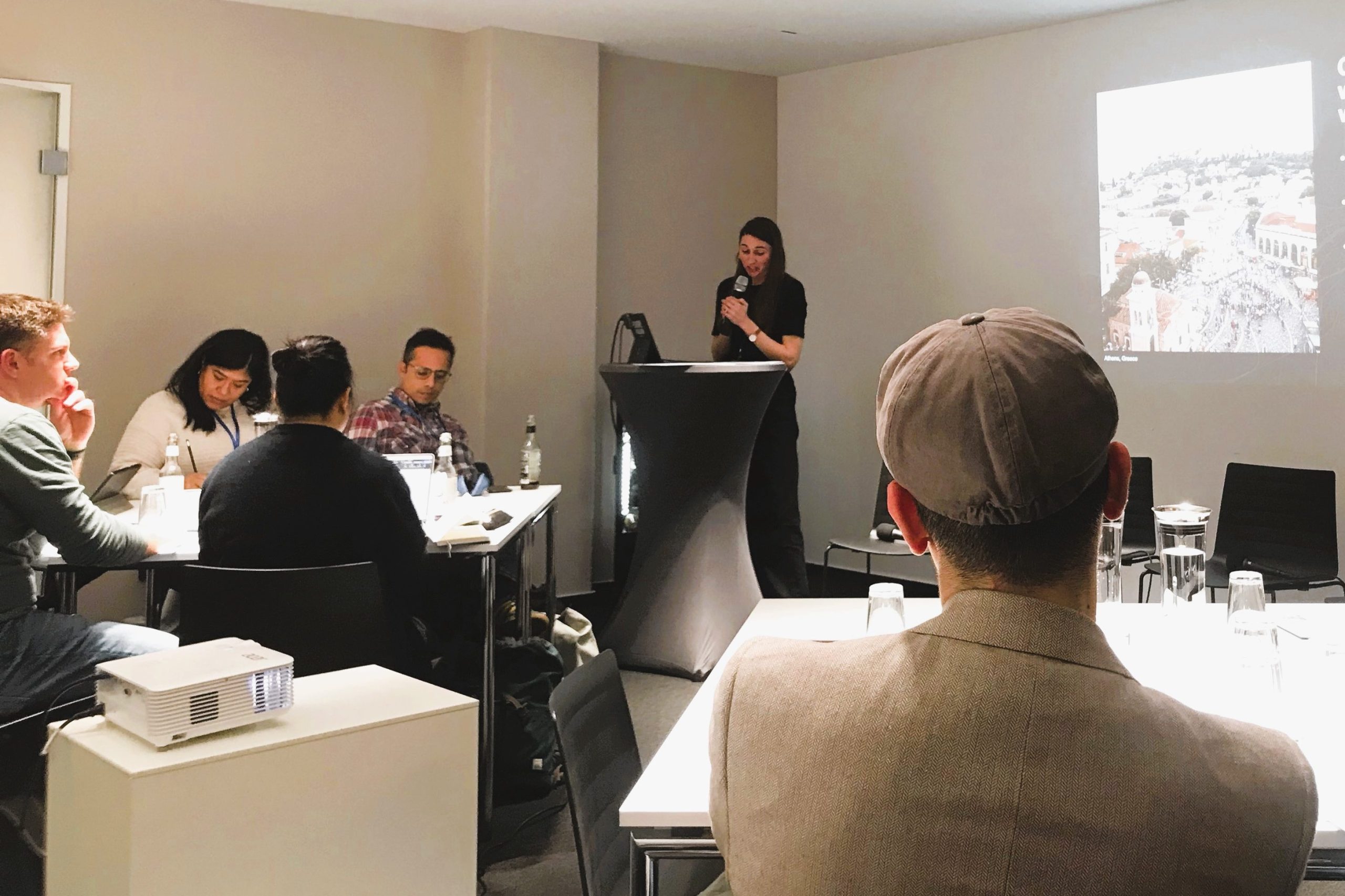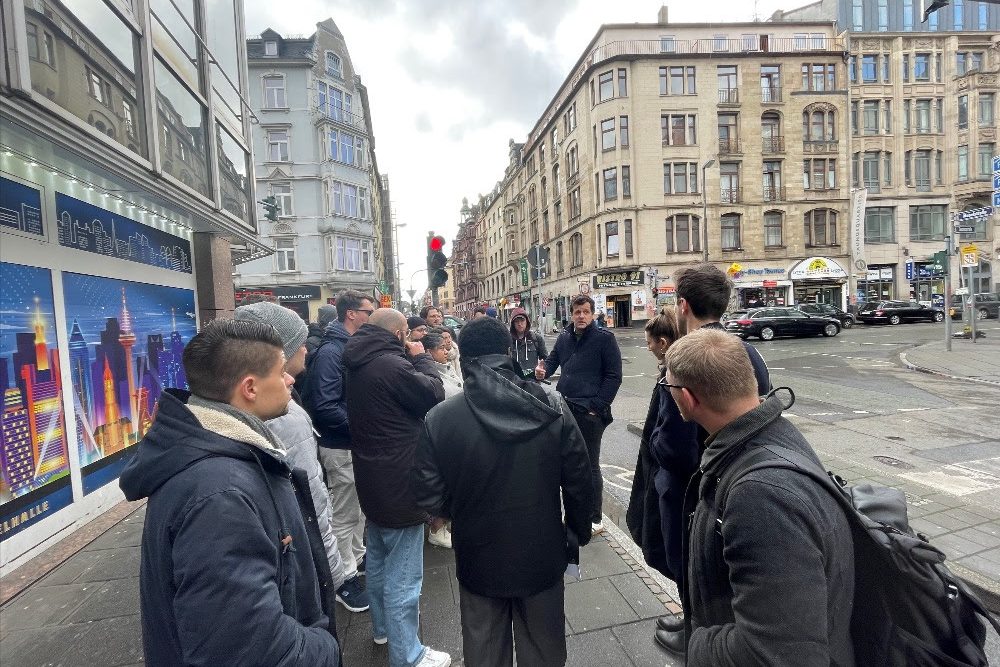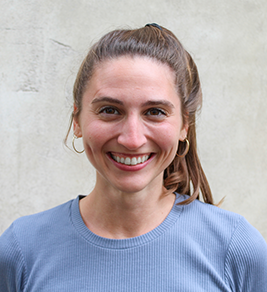It is not often that the complex compartments of one’s life merge into one.
As a research fellow at Nordregio, I work with many different topics using applied research methods to inform policy. However, my education is from a humanities perspective, and I often spend time outside the office thinking more theoretically and philosophically about cities. Meanwhile, my personal hobbies range from reading and creative writing to participating in a local church. It’s rare that I can combine these facets of my life, but I recently had the opportunity to do precisely that.
In February, I travelled south to Frankfurt. I can’t say the weather was much of an improvement to the dark grey days of Stockholm, but it was refreshing to travel for the weekend and visit a city I knew nothing about. Other than being a hub of European banking, Frankfurt was a complete stranger to me, and wandering out of the central train station, I was confronted by a different atmosphere and built environment than the one I’ve grown accustomed to in the Nordics.
While I enjoyed some hours meandering through town, the main reason for my trip was to join the Urbano conference: a gathering of around 50 people working in churches in European cities. The gathering (organised across 3 days with participants from around 15 cities) was the first of its kind, bringing together church leaders, community organisers, and urban researchers like myself who care about cities and the people in them. The goal of the conference was to “reimagine ways the church engages cities” by discussing how global cities are developing, understanding the challenges they are facing, and identifying how churches might support the needs of urban residents.
Several months earlier, the conference coordinator invited me to share insights at the gathering from my perspective as both an urban researcher and a local church member. He was particularly interested in the remote work and multi-locality project conducted at Nordregio. In 2021, I worked on a report for this project, which involved diving into the origins of multi-locality both theoretically and practically. While the project focused on practical, policy-related outcomes of remote work patterns, the invitation to speak at this conference afforded me the opportunity to build upon the initial research and expand into new territories of application.

Conference session on place theory and multi-locality
To kick things off, I provided a (quick) overview of recent place theory. I described the general shift in urban theory from fixed to fluid understandings of place—a shift rooted heavily in changes that took place around the 1970s. These include Charles Jenck’s claim of the death of modernism in 1972, the emergence of post-modernist/post-structuralist intellectual movements in the late 1960s, and Jack Nilles’ 1973 conceptualisation of “telework,” in which central office spaces could be moved to more localised hubs to reduce urban commuting. This latter moment was followed by the emergence of commercially available private computers, the Internet, and various other factors contributing to the digital revolution.
These changes influence our conceptualisation of multi-locality. On the one hand, we can consider a fixed idea of multi-locality in accordance with a pre-1970s understanding of place. In this case, we might define multi-locality as associating with or having access to multiple places or geographically related identities. This concept of multi-locality involves segmentation of cultures, classes, and uses, and monofunctional planning (i.e., zoning). It also implies that the identity of place is essentialised— places are thought to have certain intrinsic characteristics. This often leads us to reduce a place to a particular set of qualities and to expect people to operate accordingly when they occupy that place. A fixed concept of multi-locality also means that territories are bounded (e.g., if one is in Frankfurt, one cannot also be engaged in Berlin, Brussels, or Budapest). And with these fixed boundaries, places are often defined by a centre and periphery.
However, building on the work of scholars like Henri Lefebvre, geographer Doreen Massey suggests that places are “constructed out of a particular constellation of social relations, meeting and weaving together at a particular locus.” Massey goes on to make four assertions: (1) places are processes; (2) places do not have to have boundaries in the sense of divisions which frame simple enclosures; (3) places do not have single, unique identities; they are full of internal conflicts; and (4) none of this denies place nor the importance of the uniqueness of place.
With this theory of place, we can propose a more fluid definition of multi-locality—associating with or accessing a single place or geographically related identity which is, itself, embedded with the interrelations of multiple places or identities. Here, place involves a combination of uses, cultures, and classes. This idea of place also accounts for the more holistic employee who shows up in his office as a professional but without denying his multiple identities as a parent or a film enthusiast or a Norwegian. Fluid places are not confined to their administrative or physical borders; rather, elements of French culture make their way into places that were previously understood as distinctly German, or office traits make their way into the home.
Three forms of multi-locality in practice
In my presentation, I provided an overview of three forms of multi-locality in practice, all of which involve elements of both fixed and fluid notions of place:
Socio-cultural multi-locality encompasses forms of multi-culturalism or multi-lingual practices in a single place. This could be through multiple people embodying cultural practices, or through individuals who bring multiple cultures into the place themselves.
Residential multi-locality involves things like immigration or tourism—people who live or are originally from a territorially defined “elsewhere” who visit or move to a new place (without denying their previous sense of home). This could also include second-home owners who have ties to more than one locality or community.
We also have many examples of labour-related multi-locality. This includes various remote work practices (e.g., co-working hubs, hybrid work routines, digital nomadism), offshoring practices in which sites of production are distinguished from sites of consumption, or fly-in, fly-out working practices. When it comes to labour-related multi-locality, we know that, despite the ability for people to work fully or part-time remotely, there are no signs of a permanent exodus from urban centres. Writing before the pandemic on digital workplace culture, Michelangelo Vallicelli also identified an emerging paradox:
If work distribution is increasingly controlled by digital technologies, this is not producing place annihilation but rather local intensification. On one side, office typologies and their large urban agglomerations still appear to be unsustainable; on the other, the city is definitely not a place to escape from for knowledge industries and knowledge-work practices, even in their mobile condition. … If space has lost its capacity to control the production chain, which is currently absorbed by digital media, then the demand for a centralization of work activities depends on relational and cultural needs.
Within a single city, people’s physical and social environments are also expanding beyond defined boundaries. In a study of movement patterns in Helsinki, researchers found that:
Daily physical and social environments that people relate to usually do not follow the clear boundaries of neighbourhoods, cities, or even nations. Everyday life commonly has developed from spatial monogamy toward a spatial polygamy. This change in the spatial behaviour of individuals … challenges planners to re-think the role of localities.
In today’s world, we all practice multi-locality. We are people in perpetual motion, and our degree of portability and accessibility to other geographies, cultures, and ways of being has social, cultural, and geographical implications. This also means an increase in the number of potential interfaces of geographies and identities, and therefore a potential increase in both conflict and richness.
One way to respond to multi-locality is to embrace the idea of what Japanese-American artist Makoto Fujimura calls “border-stalking.” Border-stalkers are those who live life at the edges of different identities and in the spaces between different geographies. In doing so, they have the ability to “cross tribal norms,” “communicate extra-tribal languages,” and “mend broken fissures of our cultures.” Since my talk was geared towards church leaders, I concluded with some ideas of how Christianity might lend additional nuance to the concept of multi-locality.
Takeaways from Urbano 2024
While I enjoyed the opportunity to share my own work, the most formative part of the conference for me was hearing from church leaders living and working in cities like Athens, Lisbon, London, and Budapest. These individuals participated in the conference because they love their cities and are thinking deeply about their role in caring for residents in their communities.
Urban planners and policymakers are not alone in caring about the city. During the conference, I provided some insights about key planning and policy themes, such as the Sustainable Development Goals, developing climate-friendly cities, the European Green Deal, improving resilience, and other concepts such as justice, accessibility, and equity—concepts which are of shared importance to church leaders.

The gathering was a reminder of common goals and hopes that various individuals and organisations share. It also reminded me of the relevance of our research, and the opportunities we have to discuss our work in our personal spheres as well as to bring our personal interests into the workplace.


